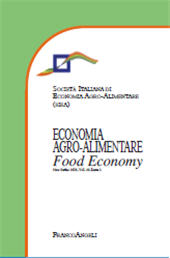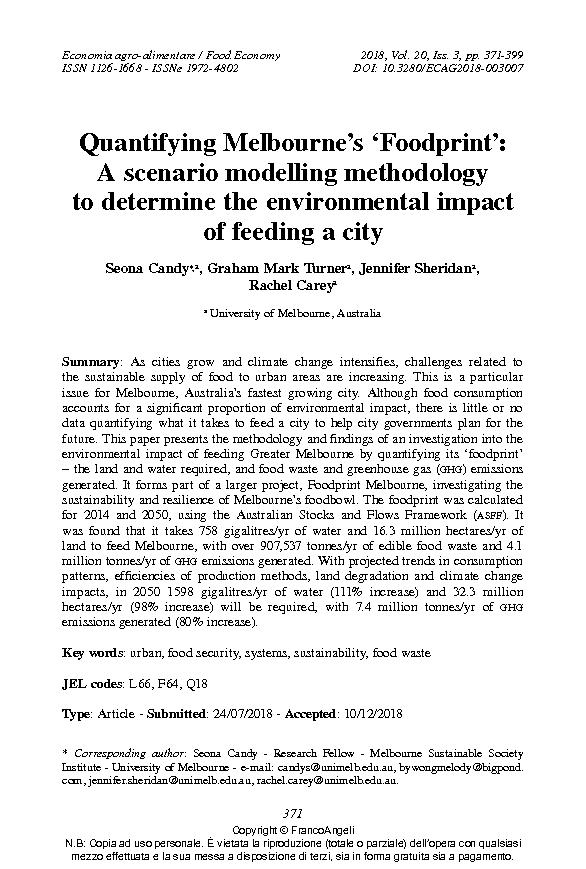Quantifying Melbourne's Foodprint : a scenario modelling methodology to determine the environmental impact of feeding a city
371-399 p.
As cities grow and climate change intensifies, challenges related to the sustainable supply of food to urban areas are increasing. This is a particular issue for Melbourne, Australia's fastest growing city. Although food consumption accounts for a significant proportion of environmental impact, there is little or no data quantifying what it takes to feed a city to help city governments plan for the future. This paper presents the methodology and findings of an investigation into the environmental impact of feeding Greater Melbourne by quantifying its 'foodprint' - the land and water required, and food waste and greenhouse gas (ghg) emissions generated. It forms part of a larger project, Foodprint Melbourne, investigating the sustainability and resilience of Melbourne's foodbowl. The foodprint was calculated for 2014 and 2050, using the Australian Stocks and Flows Framework (asff).
It was found that it takes 758 gigalitres/yr of water and 16.3 million hectares/yr of land to feed Melbourne, with over 907,537 tonnes/yr of edible food waste and 4.1 million tonnes/yr of ghg emissions generated. With projected trends in consumption patterns, efficiencies of production methods, land degradation and climate change impacts, in 2050 1598 gigalitres/yr of water (111% increase) and 32.3 million hectares/yr (98% increase) will be required, with 7.4 million tonnes/yr of ghg emissions generated (80% increase). [Publisher's text].
Is part of
Economia agro-alimentare : XX, 3, 2018-
Articles from the same issue (available individually)
-
Information
ISSN: 1972-4802
KEYWORDS
- Urban, food security, systems, sustainability, food waste



